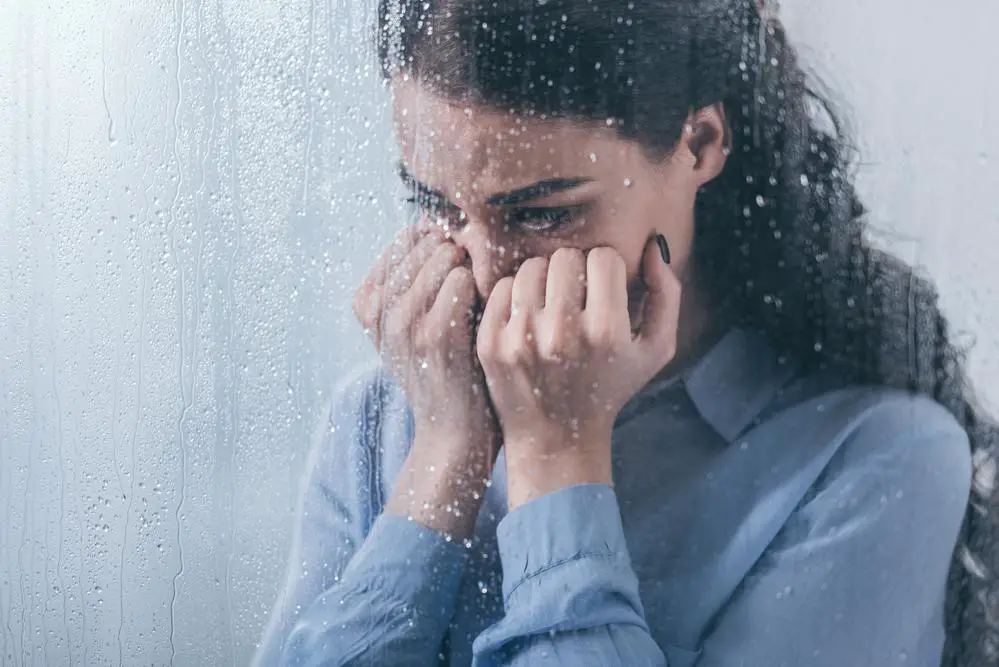As a BetterHelp affiliate, we receive compensation from BetterHelp if you purchase products or services through the links provided
Stress and anxiety are easy to mix up because they cause similar physical symptoms. These are both emotional responses causing rapid heart rate or breathing, muscle tension, irritability, lack of concentration, and sleep disruptions.
These symptoms of stress and anxiety are similar because they both awaken the fight-or-flight response that ensures our survival in life-threatening situations. However, in the case of both stress and anxiety, the body perceives a life-threatening situation, even if one doesn’t exist.
Understanding stress vs anxiety is a critical way to know what you are dealing with, allowing you to find suitable coping mechanisms.
Stress vs Anxiety: Understanding the Difference
Stress differs from anxiety because an external stressor, like a specific situation or event, causes it. Therefore, once the situation or event is over, the stress abates.
Anxiety is different. It causes a constant sense of unease that persists even without a stressor. It’s more an excessive worry about what could happen rather than a response to what’s happening in the present.
According to Calm, it’s normal for everyone to experience stress and anxiety sometimes. Stress can benefit us by motivating us to push ahead and perform our best to achieve things. Anxiety increases our alertness and prepares us for potential threats, helping us dodge risky situations.
Therefore, stress and anxiety are okay in moderation, but too much is damaging. There are ways to manage them, which we will discuss further in the article, but it’s important to recognize stress vs anxiety.
Recognizing the Signs of Stress
 Recognizing the common signs of stress is crucial for managing it effectively. Stress shows itself in various ways, both physically and emotionally.
Recognizing the common signs of stress is crucial for managing it effectively. Stress shows itself in various ways, both physically and emotionally.
Physical Symptoms
- Headaches or migraines
- Muscle tension or pain
- Fatigue
- Sleep disturbances (e.g., insomnia or oversleeping)
- Digestive problems like indigestion, heartburn, upset stomach, diarrhea, or constipation
- Rapid heartbeat or chest pain
- Sweating or clammy hands
- Changes in appetite or menstrual cycle
- Panic Attacks
- Blurred eyesight
- Dizziness, fainting, high blood pressure, and chest pains
- Worsening of existing health problems
Emotional Symptoms
- Irritability or agitation
- Anxiety or nervousness
- Depression or sadness
- Feeling overwhelmed or unable to cope
- Mood swings
- Restlessness
- Difficulty concentrating or making decisions
- Feeling lonely or isolated
Behavioral Symptoms
- Increased use of substances like alcohol, cigarettes, or drugs
- Changes in eating, such as overeating or undereating
- Procrastination or avoidance of responsibilities
- Social withdrawal or isolation
- Nail biting, pacing, teeth grinding, or other nervous habits
- Increased frequency of illness due to weakened immune system
- Loss of libido or sexual dysfunction
- Increased sensitivity to sensory input, like noise or light
Unraveling the Complexities of Anxiety
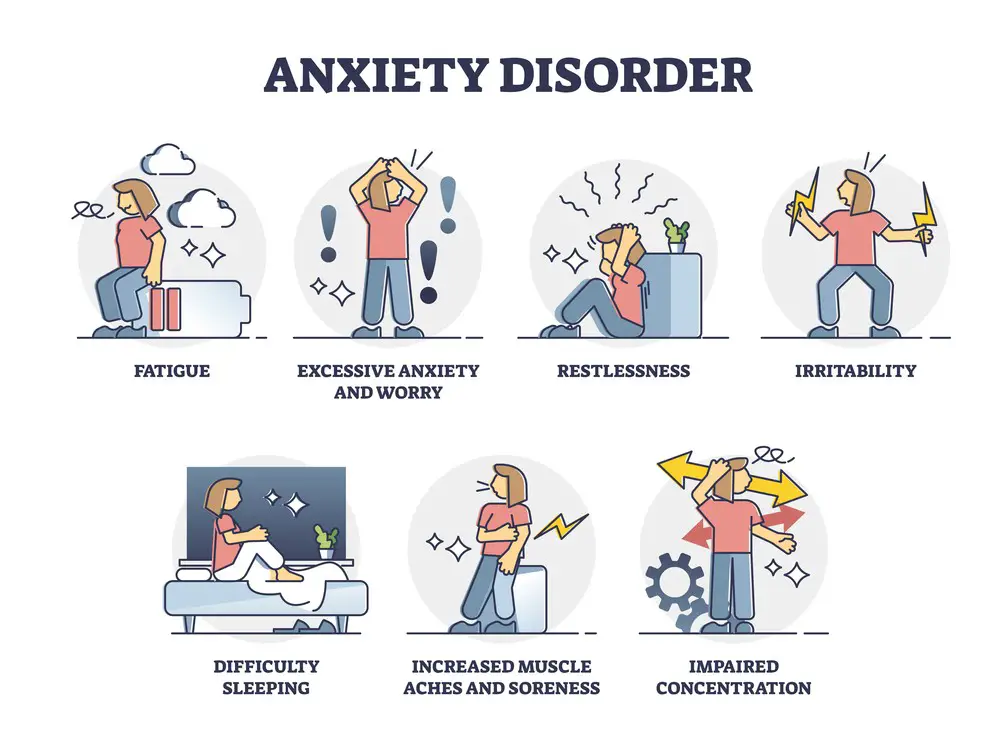 Anxiety is a complex mental health condition that manifests in various ways. Short-term anxiety differs from anxiety disorders, which persist for longer and can disrupt a person’s life.
Anxiety is a complex mental health condition that manifests in various ways. Short-term anxiety differs from anxiety disorders, which persist for longer and can disrupt a person’s life.
According to the American Psychological Association, generalized anxiety disorder is one of the most common. It has the physical symptoms of anxiety, but the sufferer worries about various aspects of life without a specific trigger. Other anxiety disorders include:
- Social anxiety disorder
- Panic disorder
- Specific phobias
- Obsessive-compulsive disorder (OCD)
- Post-traumatic stress disorder (PTSD)
Causes of anxiety include:
Biological Factors: Genetics, brain chemistry, and imbalances in neurotransmitters can predispose individuals to anxiety disorders.
Environmental Factors: Stressful life events, trauma, abuse, or significant changes in life circumstances can trigger or exacerbate anxiety.
Personality Traits: Certain personality traits ( perfectionism, neuroticism, or a tendency to worry excessively) may increase vulnerability to anxiety.
Psychological Factors: Negative thinking patterns, irrational beliefs, or learned behaviors often contribute to the development of anxiety disorders.
When looking at stress vs anxiety, you will find that the two share many physical symptoms, including increased heart rate, sweating, and muscle tension. However, its cognitive and emotional symptoms differ because they include excessive worry, racing thoughts, difficulty concentrating, catastrophizing, irrational fears, and intrusive thoughts. The person may have constant apprehension, dread, irritability, restlessness, and a sense of impending doom.
Coping Strategies for Dealing with Stress
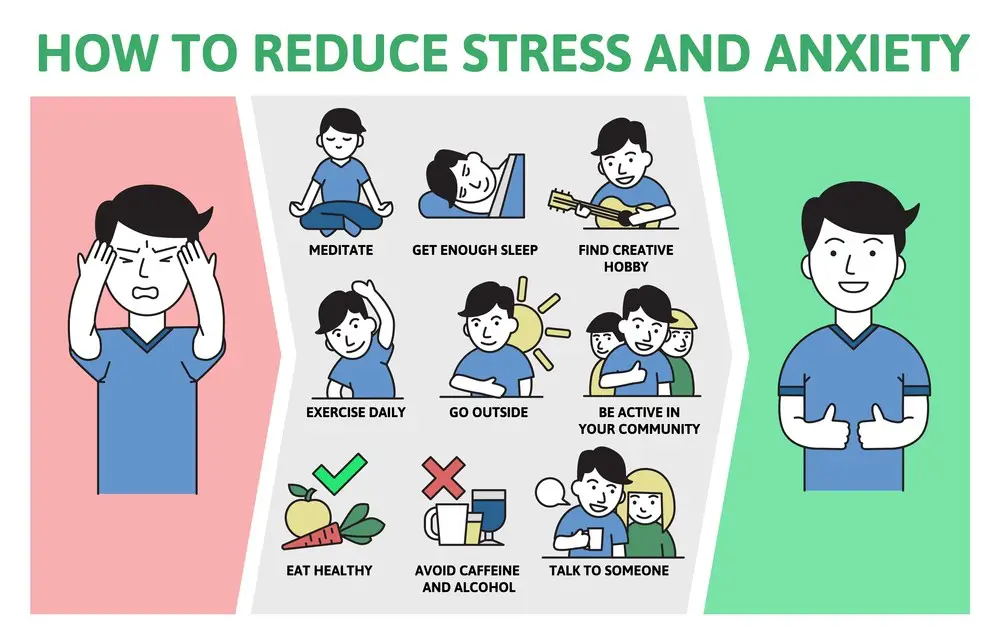 It’s easy to learn a few coping strategies for dealing with stress. These can help reduce stress’s impact on the physical and mental well-being of the person, improving their overall quality of life. Effective coping strategies include:
It’s easy to learn a few coping strategies for dealing with stress. These can help reduce stress’s impact on the physical and mental well-being of the person, improving their overall quality of life. Effective coping strategies include:
- Deep breathing, mindfulness, muscle relaxation exercises, and guided imagery can all assist the body and mind.
- Regular physical activity will release endorphins that reduce tension and improve mood.
- Healthy lifestyle habits can help alleviate stress, including maintaining a balanced diet, getting adequate sleep, and avoiding alcohol, caffeine, and nicotine.
- Time management, like prioritizing tasks, setting realistic goals, and creating manageable steps to undertake tasks, can help reduce overwhelming feelings.
- Identifying the cause of stress and developing a plan with potential solutions to address the underlying issues.
- Social support from family, friends, or support groups encourages sharing and getting emotional validation that can relieve stress.
- Learning when to say no to excessive commitments or demands by setting boundaries.
These are a few practical coping strategies for dealing with stress. However, if stress becomes overwhelming or interferes with daily functioning, support from a therapist or counselor can help provide tailored coping strategies.
Overcoming Anxiety: Effective Techniques and Tips
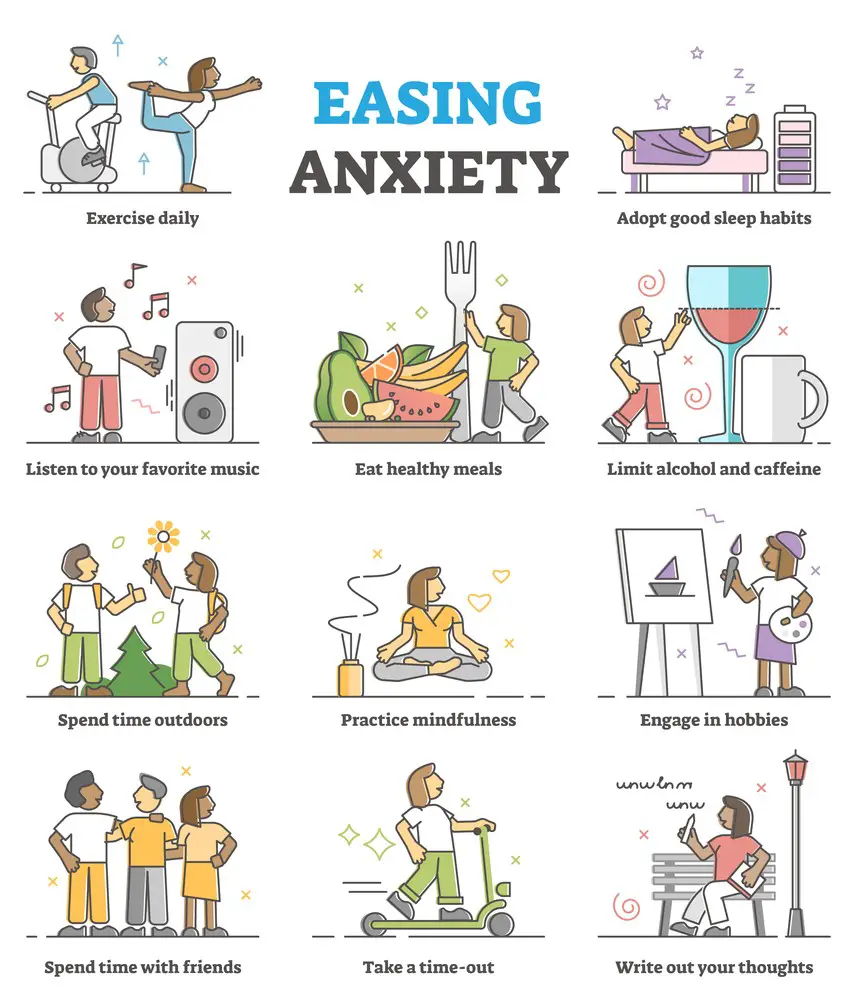 Overcoming anxiety involves a combination of strategies that address its underlying causes, manage symptoms, and promote overall well-being. Here are some effective techniques and tips for overcoming anxiety:
Overcoming anxiety involves a combination of strategies that address its underlying causes, manage symptoms, and promote overall well-being. Here are some effective techniques and tips for overcoming anxiety:
Cognitive-behavioral therapy (CBT)
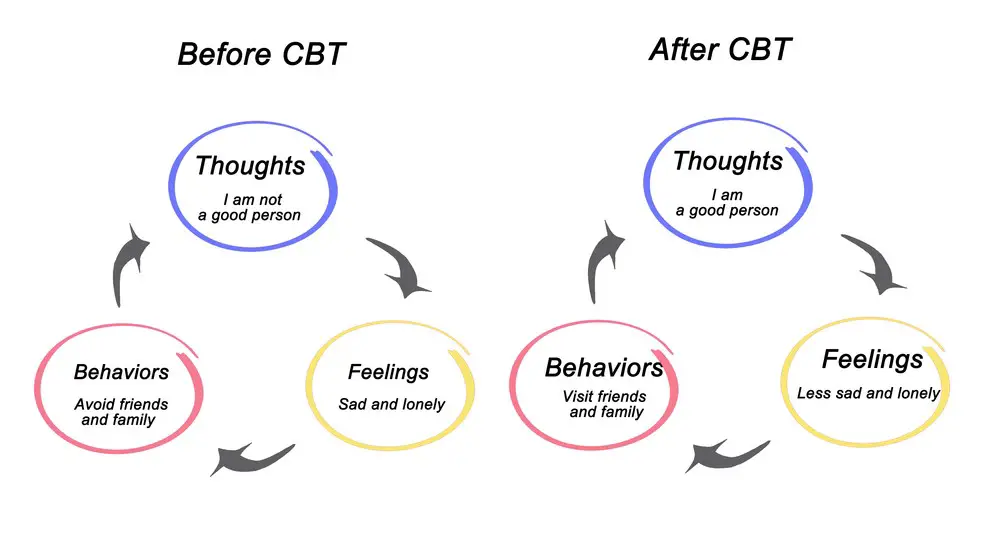 Anxiety disorders respond well to CBT. It uses cognitive restructuring and behavioral techniques to help identify and change negative thought patterns and beliefs contributing to anxiety. CBT teaches coping skills and promotes healthier responses to stressors.
Anxiety disorders respond well to CBT. It uses cognitive restructuring and behavioral techniques to help identify and change negative thought patterns and beliefs contributing to anxiety. CBT teaches coping skills and promotes healthier responses to stressors.
Exposure Therapy
Exposure therapy involves gradually facing feared situations or objects in a controlled and supportive environment. By confronting fears and learning that they are not as threatening as perceived, individuals can reduce anxiety and increase their tolerance for anxiety-provoking stimuli.
Acceptance and Commitment Therapy (ACT)
ACT combines mindfulness-based techniques with strategies to increase psychological flexibility and values-based action. By learning to accept uncomfortable thoughts and emotions while taking meaningful action toward valued goals, individuals can reduce anxiety and improve overall well-being.
Mindfulness
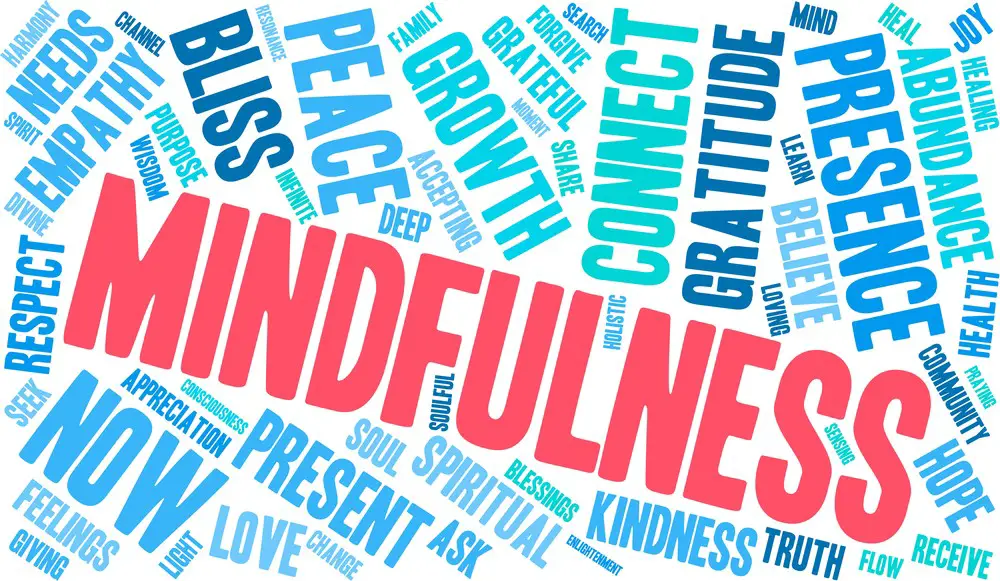
Mindfulness uses meditation to cultivate present-moment awareness and acceptance of thoughts, feelings, and bodily sensations without judgment. Regular practice can help individuals develop greater resilience to stress and anxiety by fostering a sense of calm and inner peace.
Deep Breathing Exercises
Regular deep breathing exercises, such as diaphragmatic breathing or the 4-7-8 technique, help activate the body’s relaxation response and counteract the physiological symptoms of anxiety.
Regular Exercise
Physical activity releases endorphins, the neurotransmitters that promote feelings of well-being and reduce stress. Alleviate anxiety and improve your mood by exercising regularly, which could be anything you enjoy, like walking, jogging, yoga, or dancing.
Healthy Lifestyle Habits
 Maintain a balanced diet, get adequate sleep, and avoid excessive caffeine, alcohol, and nicotine, which can exacerbate anxiety. Prioritizing self-care activities will help nurture your physical and emotional well-being.
Maintain a balanced diet, get adequate sleep, and avoid excessive caffeine, alcohol, and nicotine, which can exacerbate anxiety. Prioritizing self-care activities will help nurture your physical and emotional well-being.
Progressive Muscle Relaxation (PMR)
PMR involves methodically tensing and relaxing muscle groups throughout the body, helping release physical tension and promoting relaxation.
Other things that can help you overcome anxiety include setting realistic goals, prioritizing tasks, getting social support, limiting exposure to stressors, and practicing self-compassion.
Overcoming anxiety takes time, patience, and persistence. The most effective techniques can differ for each person. If the anxiety persists, professional guidance can provide personalized treatment and support tailored to your needs.
The Link Between Stress and Anxiety
Any article discussing stress vs anxiety must delve deeper into their link. The link between stress and anxiety is significant, as stress often serves as a trigger for anxiety symptoms and intensifies existing anxiety disorders. Understanding the connection is crucial for effectively managing them.
Physiological Response
The “fight or flight” response gets activated by stress and anxiety, leading to the release of stress hormones such as cortisol and adrenaline. The response prepares the body for perceived threats, increasing its heart rate, blood pressure, and respiration. It also redirects blood flow to vital organs.
Psychological Factors
Chronic stress can lead to developing anxiety disorders or worsen existing anxiety symptoms. Prolonged exposure to stressors can lead to heightened arousal, hypervigilance, and an increased susceptibility to anxiety-provoking stimuli.
Cognitive Patterns
Stressful situations often trigger negative thinking patterns and cognitive distortions, such as catastrophizing, reflection, and excessive worry, which are common in anxiety disorders. Chronic stress can reinforce these maladaptive thought patterns, leading to permanent anxiety symptoms.
Behavioral Responses
Individuals may adopt avoidant behaviors or coping strategies (e.g., substance use, procrastination) to manage stress, which can inadvertently reinforce anxiety symptoms over time. Avoidance behaviors can lead to the temporary alleviation of anxiety but reinforce the perception of threat and increase anxiety in the long term.
Vulnerability
Prolonged exposure to stressors, especially during sensitive periods of development or in individuals with a genetic predisposition to anxiety, can increase vulnerability to anxiety disorders. Stressful life events, trauma, or significant changes in circumstances can trigger the onset of anxiety symptoms in susceptible individuals.
The association between stress and anxiety is bidirectional, meaning that stress can lead to anxiety, and anxiety can exacerbate stress. Chronic anxiety can also contribute to increased sensitivity to stressors and impair the ability to cope effectively, perpetuating a cycle of stress and anxiety.
Chronic stress and anxiety are associated with an amplified risk of various physical health problems, including cardiovascular disease, gastrointestinal disorders, immune dysfunction, and sleep disturbances, which can lead to far-reaching consequences for overall health and well-being.
Managing Stress and Anxiety: A Holistic Approach
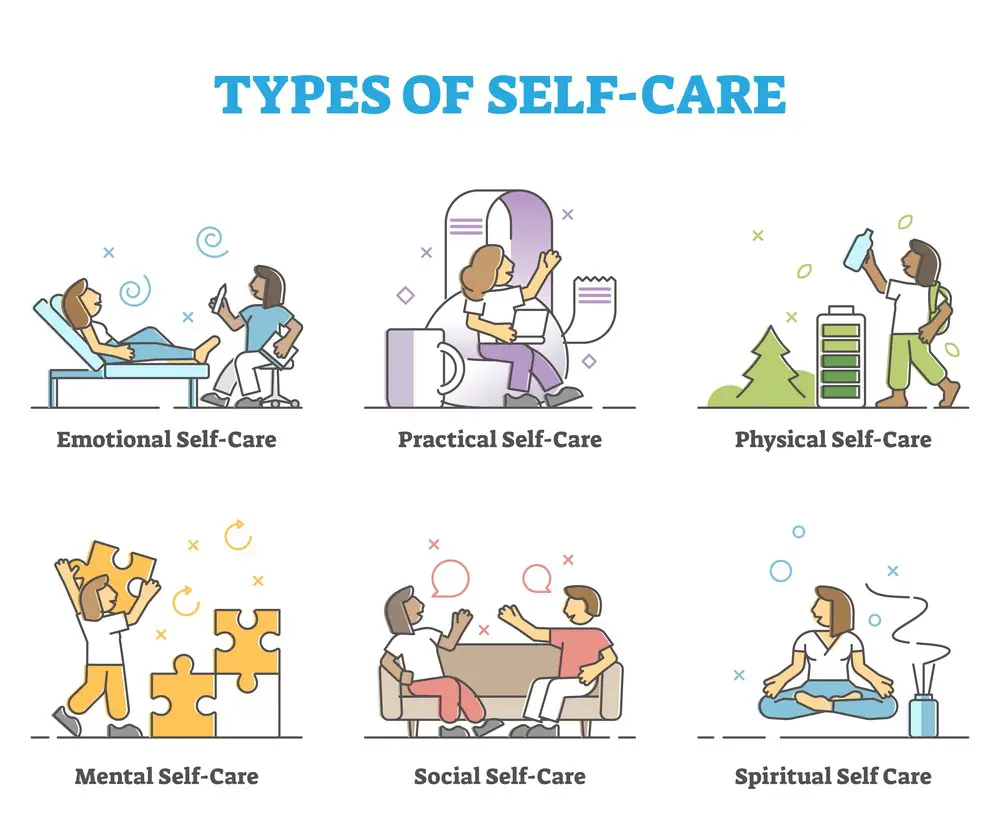 Using a holistic approach to managing stress and anxiety involves addressing the physical, emotional, and spiritual aspects of well-being. Anyone can effectively decrease stress and anxiety levels by integrating strategies that promote balance and harmony across these domains. Here’s a holistic approach to managing stress and anxiety:
Using a holistic approach to managing stress and anxiety involves addressing the physical, emotional, and spiritual aspects of well-being. Anyone can effectively decrease stress and anxiety levels by integrating strategies that promote balance and harmony across these domains. Here’s a holistic approach to managing stress and anxiety:
- Practice mindfulness meditation to develop resilience to stressors and promote emotional balance.
- Incorporate deep breathing exercises, progressive muscle relaxation, guided imagery, or yoga nidra to activate the body’s relaxation response and counteract the physiological symptoms of stress and anxiety.
- Exercise regularly to promote relaxation, enhance sleep quality, and boost overall well-being.
- Maintain a balanced diet, adequate hydration and sleep, and reduce the intake of processed foods, caffeine, alcohol, and sugar.
- Learn how to identify stressors and develop effective stress management strategies.
- Cultivate supportive relationships with friends, family members, or support groups.
- Limit exposure to stress-inducing stimuli, such as negative news or social media, and prioritize activities that promote relaxation and connection with others.
- Engage in creative activities, hobbies, or expressive arts, such as painting, writing, music, or gardening, as a form of self-expression and stress relief.
- Enjoy nature with outdoor activities, such as hiking, gardening, or birdwatching, to promote relaxation, reduce stress, and enhance overall well-being.
- Explore spiritual practices, beliefs, or traditions that provide comfort, meaning, and purpose.
- Seek assistance from mental health professionals, such as therapists, counselors, or psychologists. They have the training to provide personalized guidance, therapy, or medication if necessary.
Finding Balance: Navigating the Interplay of Stress and Anxiety
Navigating the interplay of stress and anxiety involves understanding how these two phenomena interact and implementing strategies to manage their effects effectively.
It’s crucial to understand the differences between stress vs. anxiety and their triggers. External events, such as work deadlines, relationship conflicts, or financial difficulties, are stressors. Anxiety triggers may include specific situations, thoughts, or memories that evoke feelings of fear or worry.
Both stress and anxiety typically cause the body to react similarly physiologically, including increased heart rate, shallow breathing, muscle tension, etc. Understanding these reactions can help you respond more effectively by practicing stress and anxiety management techniques and coping strategies. By navigating the interplay of stress and anxiety with awareness, understanding, and proactive coping strategies, you can better manage their effects and promote overall well-being.
Navigating the Crossroads of Stress and Anxiety: When to Seek Help and Treatment Options
 Understanding the nuances between stress and anxiety is the first step, but recognizing when it’s time to seek professional help is equally important. As we conclude our exploration of stress versus anxiety, let’s discuss the signs that indicate the need for intervention, the treatment options available, and how to establish and recognize progress during your journey toward better mental health.
Understanding the nuances between stress and anxiety is the first step, but recognizing when it’s time to seek professional help is equally important. As we conclude our exploration of stress versus anxiety, let’s discuss the signs that indicate the need for intervention, the treatment options available, and how to establish and recognize progress during your journey toward better mental health.
Recognizing the Red Flags: When to Be Concerned
It’s normal to experience stress and anxiety at various points in life; however, when these feelings become overwhelming, persistent, and interfere with daily activities, it’s time to take action. Be on the lookout for symptoms such as:
- Excessive worrying or fear that is difficult to control
- Avoiding social situations or activities you once enjoyed
- Physical symptoms like insomnia, heart palpitations, or unexplained aches
- Changes in appetite, energy levels, or mood
- Difficulty concentrating or feeling as though your mind goes blank
If you or someone you know is experiencing these signs, it’s crucial to seek professional help. Early intervention can prevent symptoms from worsening and improve long-term outcomes.
Choosing Your Path: Therapy, Medication, or Both?
Therapy: Various forms of therapy, such as cognitive-behavioral therapy (CBT), are highly effective for both stress and anxiety. A therapist can provide tools and strategies to manage symptoms and address the underlying causes of your distress.
Medication: In some cases, medication may be recommended to help manage anxiety. Antidepressants, anti-anxiety medications, or beta-blockers are commonly prescribed. It’s essential to discuss the benefits and potential side effects with a healthcare provider.
Combination Treatment: Often, a combined approach of therapy and medication can be beneficial. This dual strategy can address both the immediate symptoms and the root psychological factors contributing to stress and anxiety.
Setting Goals for Treatment: Charting Your Course to Wellness
When embarking on treatment, setting clear, achievable goals is vital:
- Define what success looks like for you. Is it a reduction in symptoms, improved relationships, or better performance at work?
- Break down your overarching goals into smaller, more manageable milestones.
- Be patient and realistic. Progress may be gradual, and setbacks are a normal part of the healing process.
Recognizing Progress: The Milestones of Improvement
As you move through treatment, it’s essential to acknowledge and celebrate your progress:
- Notice changes in your thought patterns and reactions to stressors.
- Track improvements in your physical symptoms, such as better sleep or reduced tension.
- Reflect on your ability to engage in previously challenging activities.
Remember, seeking help is a sign of strength, not weakness. Whether you choose therapy, medication, or a combination of both, the goal is to find the best approach that works for you. By setting clear goals and recognizing each step forward, you can navigate the journey from stress and anxiety to a place of greater peace and control over your mental health.
- Breaking the Silence: Why Men’s Mental Health Matters More Than Ever - April 15, 2025
- How to Transform a Home’s Patio Space into a Relaxing Space - March 23, 2025
- 5 Strategies to Use a Cell Phone to Help Manage Your Stress - March 23, 2025
This site contains affiliate links to products. We will receive a commission for purchases made through these links.

